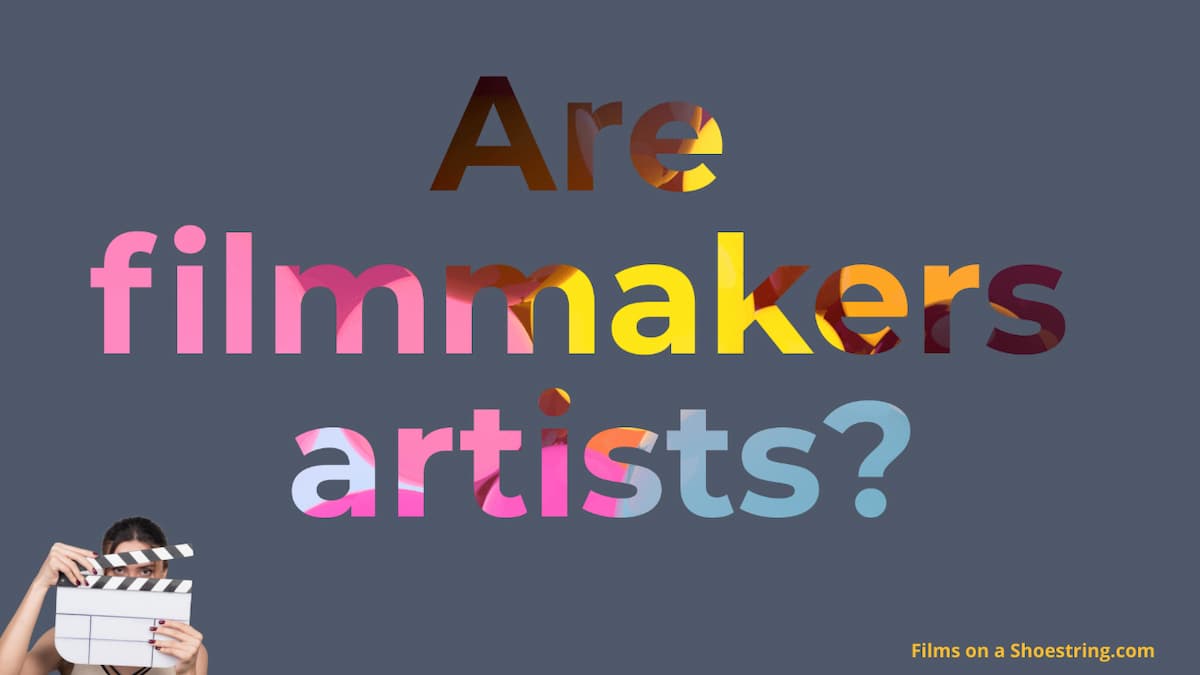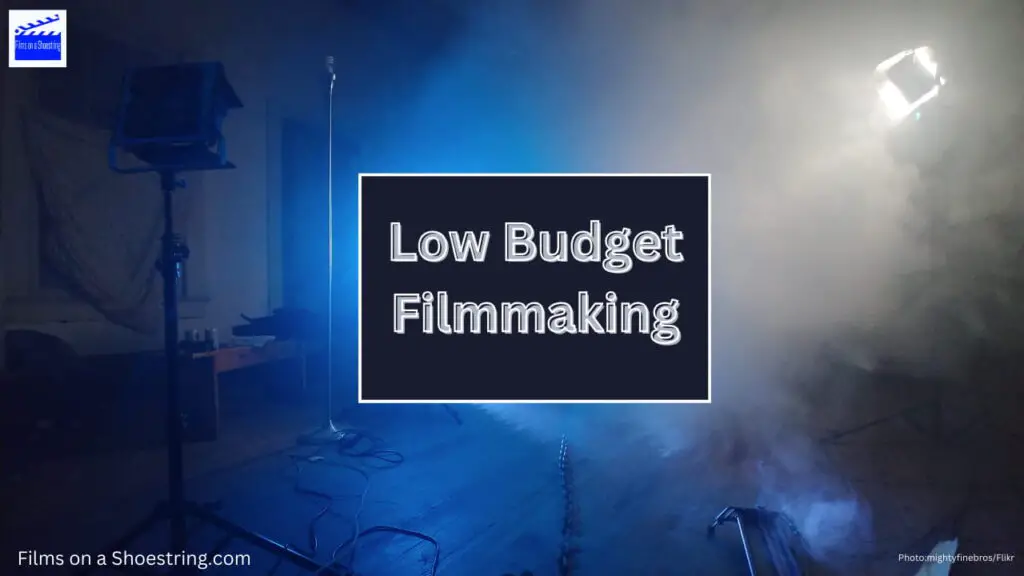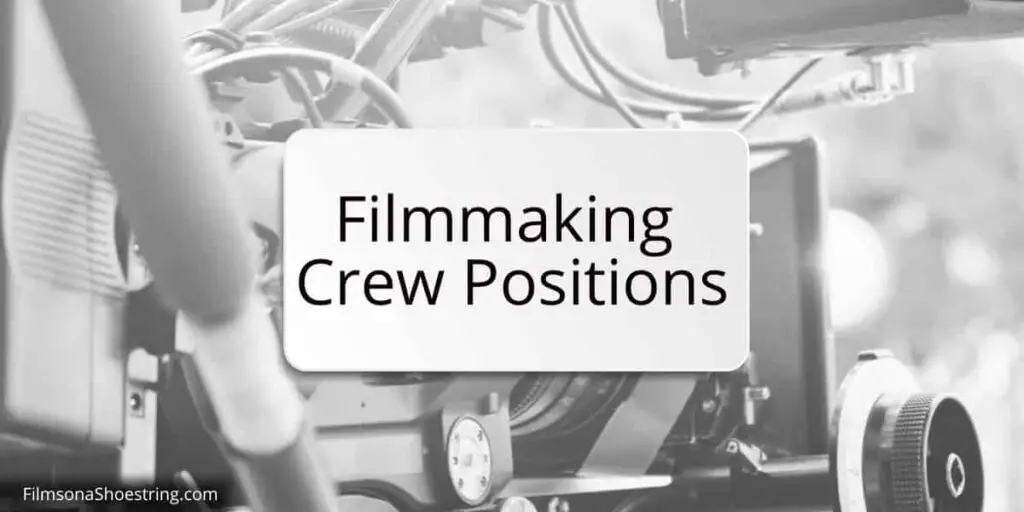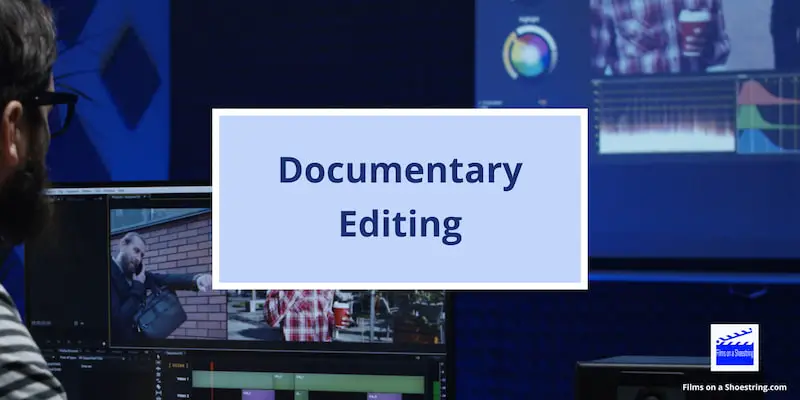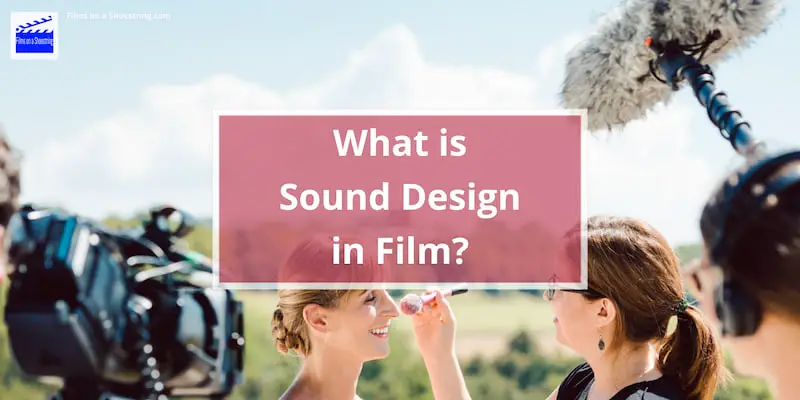If you’re enthusiastic about filmmaking and considering a filmmaking career, it’s important to ask are filmmakers artists, and if so, how? Answering this question will inform your decision making about what you are trying to achieve with your filmmaking.
Filmmaking is a unique art form that combines elements of storytelling, visual imagery, sound design and performance to create a powerful and engaging experience for audiences. It has the power to move people emotionally and intellectually, inspiring them to reflect on life’s meaningful moments.
Filmmakers are artists who use their skills to capture stories in ways that transcend words alone. By creating visuals that add depth and texture to their narratives, they are able to communicate complex themes in an accessible way.
Through careful direction and editing, they can craft stories that engage viewers on multiple levels while still providing entertainment value.
Filmmakers are not just creators of art; they are storytellers as well, who bring characters and settings alive through their work.
Whether it’s independent films or big-budget blockbusters, filmmakers have the ability to captivate audiences with stories that evoke emotion and beauty through the lens of moving pictures.
The Impact of Technology on Filmmaking
Filmmaking is an art form that combines a variety of elements into a single work. Filmmakers are artists who bring together the many pieces of the puzzle with their creativity and vision. However, technology has had a major impact on filmmaking in recent years, enabling filmmakers to create more stunning visuals, expand their creative potential, and speed up production times.
Cameras have become more sophisticated and provide higher resolution images than ever before. This allows cinematographers to capture stunning scenes in greater detail and provides viewers with an immersive experience. Additionally, digital editing programs like Adobe Premiere Pro allow filmmakers to quickly shape footage into professional-looking projects without having to spend hours in post-production. With these advancements, filmmakers can now focus more on creating unique stories instead of battling technical difficulties or wading through long hours of editing.
Technology has also enabled new forms of storytelling such as virtual reality and 360 video experiences that were previously impossible or impractical to make. Furthermore, advances in online streaming has made it easier than ever for content creators to distribute their projects directly to audiences all over the world without having to go through traditional distribution models such as film festivals or theatrical releases. These changes have allowed filmmakers more control over how they share their work while also providing them with greater access to audiences than ever before.
Overall, technology has had a huge impact on filmmaking by making it easier for filmmakers to create high quality projects quickly and efficiently while also allowing them to explore new ways of telling
The Business of Filmmaking
If a filmmaker is to succeed in the film industry, they have to sell their talent and management skills to the producers who obtain the money and work closely with them to get projects started, completed, and sold.
That’s why a film director always started working with short film, learning firsthand each skill and technique needed to get effective storytelling onto screen, and experimenting with different ways to achieve an artistic vision. Then they work through independent film projects, with a successful feature film at film festivals getting the attention of the film studios and larger productions.
Whether they work on documentary or fictional productions, are an experimental filmmaker or still a student picking up new skills at film school, a filmmaker must be good at working with other people in a team, while managing their workload effectively.
For those artist filmmakers who use the moving image to create a piece of modern art, business skills still come in useful. Working with institutes and galleries to create pieces for specific spaces and exhibitions, within budgets sometimes provided through contemporary art grants.
The Nature of Art
Filmmakers are often viewed as artistic creators in the same vein as writers, painters and sculptors. Movies have long been regarded as a form of art and just like paintings, photographs and sculptures.
The visual arts are art forms such as painting, drawing, printmaking, sculpture, ceramics, photography, video, filmmaking and design. All these types of art have the same goal – to express ideas or emotions through visual representation.
Films possess their own unique characteristics that make them powerful works of art. They are not just pictures with sound but stories that combine many elements such as dialogue, music and editing to create an experience for viewers that is both entertaining and thought-provoking. Through these elements filmmakers can create an emotional connection with their audience which is one of the main goals of any artist.
The relationship between cinema and the visual arts has been debated for many years but it is clear that filmmakers do play an important role in creating works of art.
They may not always be creating modern art films with the intention to be seen as moving image contemporary art pieces but they still put their creative vision into every frame they shoot or scene they write which makes them true artists in their own right.
The Artist as a Storyteller
Filmmaking is an art form that combines visual elements, music, and storytelling to create a unique experience for viewers. As a filmmaker, you have the power to capture stories and emotions in ways that draw people in and connect with them on a deeper level.
To cultivate this artistry, filmmakers must embrace the role of artist as storyteller by using their own creative vision and technical skills to bring their stories to life, working with other filmmakers and department heads who provide the physical equipment and specialist expertise.
By understanding how elements such as cinematography, editing, sound design, and composition can be used together to craft compelling narratives, filmmakers can create memorable works of art that will resonate with audiences.
With dedication and practice any filmmaker can develop the tools necessary for telling captivating stories through film, though those with the right people skills are in a better position to pull in and work together with the specialists who know which equipment and techniques make a creative vision a reality.
Using Visual Language in Film
Film is a powerful medium of artistic expression, and filmmakers are masters of the visual language that creates engaging stories on-screen. Through the manipulation of light, color, texture, framing and camera movement, filmmakers are able to create compelling images that convey emotion and tell tales in ways that words cannot.
This visual language is a key part of why films can be so captivating to audiences. By using this language effectively, filmmakers are able to craft stories with an artistry that rivals traditional forms of art such as painting or sculpture.
In order to use this visual language effectively as a filmmaker, one must have a strong understanding of composition and perspective. They must also understand how to manipulate elements such as light and color in order to convey emotion and set the tone for each scene. A well-executed shot can make all the difference between an effective film and one that falls flat.
For centuries now filmmakers have been utilizing their mastery of visual language to create works of art for audiences everywhere. From classic films like Citizen Kane to modern masterpieces like The Lord Of The Rings trilogy, these films will stand the test of time as examples of how powerful visual storytelling can be when done correctly.
There is no denying the artistic power of film when headed by talented directors who know how to get the best out of screenwriters, actors, and the crew.
The Cinematic Narrative
As filmmakers, we are constantly reminded that our work is an art form. We strive to create stories and images which not only captivate audiences, but also move them emotionally. We use the tools of cinematic narrative to achieve this goal.
Narrative filmmaking involves the collaboration of dozens of artists and technicians who bring their individual expertise and experience to bear on the film’s production.
Filmmakers must select the right instruments to tell their story effectively, such as editing, staging, lighting, sound, framing, focus and color. They must also contend with practical constraints while still allowing their own artistic vision to shine through in the finished product.
YouTube: The Impact of Art Direction in Film
When executed successfully, a filmmaker’s narrative can have a profound impact on viewers by providing them with an engaging experience. Theorists have explored how people cognitively engage with films in order to understand their fiction better. Likewise, non-narrative films can be aesthetically stimulating without necessarily relaying a specific event or plot point.
Ultimately it is up to filmmakers as artists to decide which approach works best for them and how they should proceed when creating their movies. It is clear that careful consideration should be given not only to storytelling but also film design so that viewers can be truly moved by what they see onscreen.
Creating Meaning Through Editing
Film editing is an art form that filmmakers use to create meaning in their films. Through the use of editing techniques such as straight cuts, juxtaposition of shots, and cross-cutting, filmmakers can craft a story with the footage they have captured. The film editor’s job is to join together the various shots into scenes, and the scenes into a finished movie.
Editing is a means of expression with its own language that can shape the film’s tone and structure. Film editors work closely with directors to create sequences that both convey meaning and create interesting visuals.
By connecting shots deliberately, the editor creates representation of space, time, vision and meaning in cinematic text. This visual language helps to bring films to life and make them more meaningful for audiences.
Cinematography and Its Role in Film
Cinematography is an art form that has been integral to the filmmaking process since its inception. Cinematographers, or directors of photography, are responsible for the creative and technical aspects of capturing a story on film.
They control the visual direction of a film by deciding camera angles, lighting techniques, film stock, filters and other elements that determine how a scene appears on screen.
Cinematographers must be masters of both art and technology – they have to know how to use cameras and lights to capture the desired look while also understanding how to create compelling visuals that convey emotion, mood and atmosphere.
It’s their job to make sure every shot is executed correctly so as not to compromise the artistic vision of the director or producer.
The cinematographer works closely with other members of the production team such as the director, production designer and editor in order to ensure that all aspects come together cohesively in creating a successful final product.
Without cinematography – without someone who knows how best to visually tell a story – films would be nothing more than just words on paper.
How Music Enhances the Visuals of a Film
Music plays a vital role in enhancing the visuals of a film and creating an emotional connection with the audience. Music helps to set the tone, establish atmosphere, and amplify emotions.
It also has the power to change viewers’ perceptions of certain scenes or characters.
Film scores can add an extra layer of depth and complexity to movies, giving them a unique voice that resonates with audiences.
Music helps filmmakers convey ideas in ways that would be impossible through visuals alone, making it an essential element for any filmmaker looking to create something truly special.
Emotional Connections with Characters and Stories
A filmmaker is a visual artist who creates powerful emotional connections with characters and stories, even when the character are not human or even living beings. Think of the array of films about animal adventures, or the impact of a plastic bag carefully watched as it floats through a particular scene.
Through carefully crafted scenes and narratives, they are able to tug on the heartstrings of audiences, connecting them to a story in a way that is both visceral and deeply moving.
By creating characters with sympathetic motivations and situations that generate tension, drama, and suspense, filmmakers can craft stories that make viewers feel as if they are living the plot alongside the characters.
This type of emotional connection is further strengthened through authentic representation of different cultures, backgrounds, and perspectives which allows viewers to more easily relate to their own experiences while understanding those of others.
Ultimately, it is this emotional power that makes films so successful at connecting people around the world through shared stories and experiences.
Fostering Audience Engagement through Style Choices
Filmmakers are artists whose craft must be honed in order to create compelling pieces of work that engage an audience. Their style choices, from the types of stories they tell to the mediums they use, can have a powerful effect on how audiences respond to their films.
For example, documentary filmmakers often use real life as their raw material to construct portraits that foster empathy through imagination.
Likewise, transmedia creators may experiment with different media platforms in order to push traditional boundaries and mix elements from different modes.
In order for filmmakers to successfully engage their audiences, they must be aware of how their style choices will impact viewers and strive to create works that will leave a lasting impression.
Creating Powerful Messages Through Films
Filmmakers are undoubtedly artists. Not only are they able to create beautiful and powerful stories that captivate audiences, but their work also has the power to shape public opinion. Through the use of mimesis, cinematic realists argue that films have a special connection to reality, which allows them to bring modern messages to mass audiences.
Experimental filmmaking gives filmmakers the freedom to express themselves in any way they desire and infuse stories with their personal views and feelings. The director’s principal job is managing the creative process; from knowing the rules of shot composition and editing, to emotionally suturing an audience into a story by creating characters and situations that generate sympathy, jeopardy, or anything else they choose.
At its core, film is an art form that combines elements such as technical creativity and artistic expression in order to advance a story, reveal character depth, and evoke emotion from viewers. Even Samuel Goldwyn’s famous quote – “Pictures are for entertainment; messages should be delivered by Western Union” – still stands true today; however it does not take away from the fact that filmmakers are capable of creating powerful messages through films.
Through the artistry of filmmaking we can share experiences with one another in ways never before possible. Whether it’s through narrative storytelling or experimental film projects, filmmakers have access to tools allowing them to engage people on a deeply emotional level while providing them with meaningful experiences they won’t soon forget.
Innovation in Filmmaking Trends
Filmmaking is an art form that is constantly evolving, with new trends and innovative techniques emerging all the time. From advances in technology to creative changes in production processes, filmmakers are pushing the boundaries of what is possible in order to create unique works of art. While film has traditionally been seen as a business endeavor, it has also become increasingly popular among artists seeking to express themselves through visual storytelling.
Innovations in filmmaking have resulted in dramatic changes to the way films are made. From advances in digital photography and sound recording equipment, to specialized tools for creating special effects and editing software that make post-production easier than ever before, there are many ways filmmakers can explore their creativity and find new ways to tell stories.
The influence of modern technology on filmmaking can be seen everywhere from virtual reality films to computer-generated imagery used for feature films. Many filmmakers are also exploring new ways of telling stories through interactive media such as video games or augmented reality experiences.
In addition, streaming services such as Netflix have made it easier than ever for people around the world to access films from different countries and cultures, making it even more important for filmmakers to stay ahead of the curve when it comes to trends and innovations in film production.
The creative power of modern filmmakers cannot be overstated; they bring together artistry and business savvy into a single package that allows them to create amazing works of art while still meeting financial requirements set by studios or investors.

